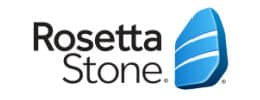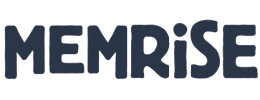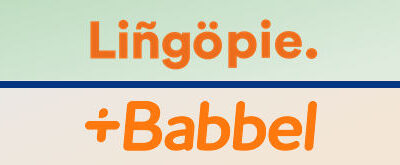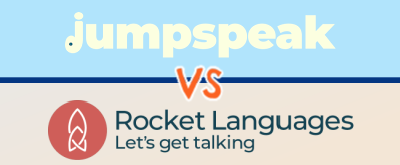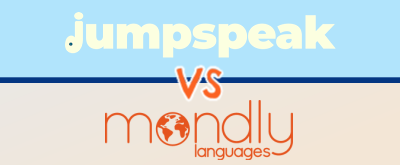With so many language learning apps available, choosing the right one can be a challenge. This article compares Memrise and Rosetta Stone, two popular options with unique approaches, to help you find the best fit for your language goals.
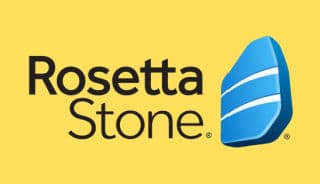
Discount: 60% OFF
Applied In Cart
|
$10-$15/mo |
Robust language program built around immersion and imagery. This is the ideal app for visual learners. |
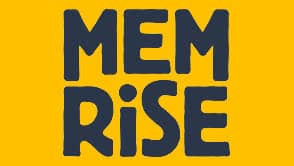
Sale: 50% OFF
Applied In Cart
|
$5-$15/mo (Pro Plan) |
Excellent app for learning and building vocabulary but lacks the overall curriculum, features, and tools found in other language programs. |
Video Comparison: Which App Is Better?
In the video above, team member Bianca discusses the strengths and weaknesses of Memrise and Rosetta Stone as we view them after using each app.
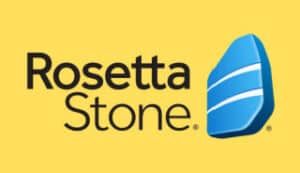
Rosetta Stone
- 20+ Languages
- Money Back Guarantee
Pros
- Flexible lesson plan that can broken into sections
- Effective learning method rooted in immersion
- Ideal language program for visual learners
- Top-notch speech recognition technology
- Extra learning resources (e.g. on-demand videos, live classes, short stories)
Cons
- Slightly more expensive than Memrise
- Lessons can become dull at times
Why Rosetta Stone Is Better Than Memrise
To kick this comparison off, let’s discuss the strengths of the Rosetta Stone language programs in relation to Memrise. That way, you can get a feel for whether Rosetta Stone is the right language app for your situation.
Immersive Learning Method
Rosetta Stone intentionally minimizes the use of English directions and translations in its courses, crafting an immersive learning experience that closely mirrors how people naturally acquire language—similar to how a child learns their first language.
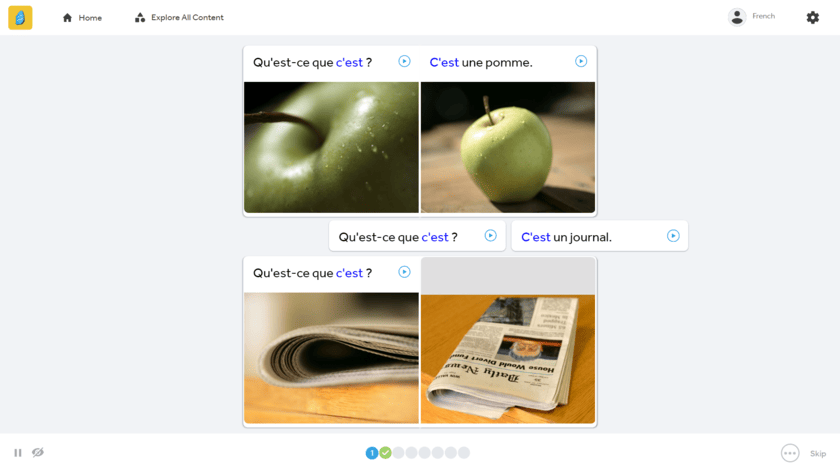
This approach, which immerses learners directly in the target language, supports deeper retention and comprehension. By reducing reliance on English, Rosetta Stone encourages students to engage more directly with the new language, enhancing both familiarity and comfort with it.
In our team’s opinion, this design choice is highly effective, as too much use of English within language lessons can actually hinder progress. The use of translations can disrupt the immersive environment and keep learners from thinking in the new language, which is crucial for true fluency.
For those who might prefer a bit more support, Rosetta Stone does allow learners to turn translations on if needed. However, by default, they are turned off to reinforce the immersion experience and promote a more intuitive learning path.
Visually-Appealing Lessons
If you’re a visual learner, you’ll likely find Rosetta Stone’s approach very appealing. This is because nearly all of its exercises and practice activities are built around images, making it an ideal choice for those who learn best by linking words and phrases to visual cues (somewhat similar to Duolingo).
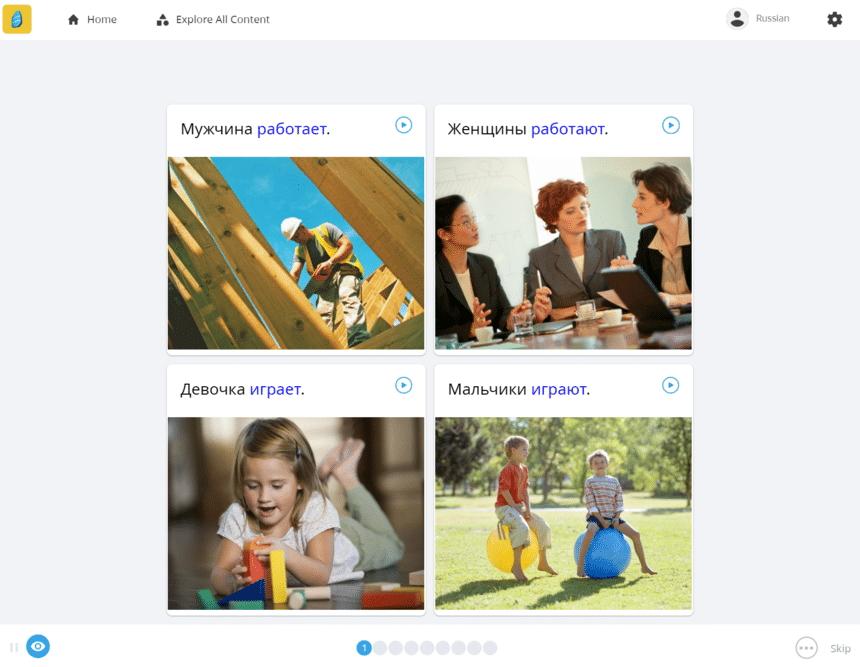
While Memrise does incorporate video content into its lessons, Rosetta Stone takes visual learning a step further. For those who need visuals to solidify mental associations and improve recall, Rosetta Stone stands out as a top option.
Accurate Speech Software
One of Rosetta Stone’s standout features is its TruAccent speech recognition technology, which the company has invested years into developing. During lessons, TruAccent actively listens as you repeat words or phrases, fill in blanks, or describe images, providing feedback on your pronunciation in real time.
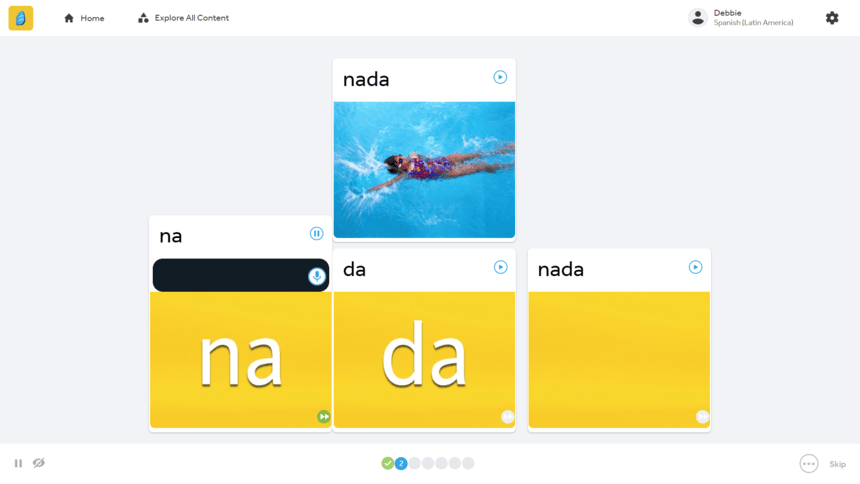
If you don’t pronounce something quite right, TruAccent will prompt you to try again until you get it correct—similar to how Rocket Languages handles pronunciation practice. Although this technology can’t fully replace interacting with a fluent speaker, it’s among the best and most precise speech recognition tools available.
In our experience, TruAccent performs significantly better than Memrise’s speech recognition, which sometimes misses errors. For instance, I tested Memrise’s system by saying “hombro” instead of “hombre” in Spanish, and it marked my response as correct despite the error.
Overall, Rosetta Stone’s TruAccent brings learners remarkably close to receiving feedback from a real person and is one of the most effective speech tools I’ve encountered.
Extra Learning Resources
A major strength of Rosetta Stone is its range of additional resources designed to enrich your language learning experience. These include short stories to improve reading and listening, interactive phrasebooks to refine pronunciation, and live classes and coaching (available for an extra fee).
The live sessions offer invaluable practice, especially beyond the basics, as they let you engage in real-time with native speakers. Rosetta Stone’s varied live classes align with different skill levels, allowing you to learn alongside peers tackling similar concepts—a worthwhile option for anyone serious about language mastery.

Memrise
- Free Version Available
- Money Back Guarantee
Pros
- Slightly more affordable than Rosetta Stone
- Lessons include videos of native speakers
- Adjust lesson length to meet your specific schedule
- Great tools for building and retaining vocabulary
- User-generated courses that cover specialty/niche topics
Cons
- Lacks in-depth verbal practice
- Limited grammar instruction
- User experience varies by device
- Free version is limited
Why Memrise Is Better Than Rosetta Stone
Now that we’ve discussed the positives of the Rosetta Stone language program, it’s only fair we discuss the strengths of the Memrise language courses as well.
Affordable Pricing
Rosetta Stone offers three main subscription options: a 3-month plan, a 12-month plan, and a lifetime subscription. The 3- and 12-month plans provide access to one language, with costs around $10 to $15 per month with discounts. The lifetime plan, which includes access to all 25 languages, is priced around $400, though frequent sales bring it down to about $150-$200.
In contrast, Memrise provides a free version with limited content. For full access to all features and courses across its 20 languages, many opt for the Pro Plan, which costs around $95 on an annual basis. Memrise also offers a lifetime pass for approximately $165.
Overall, Memrise tends to be the more affordable option and a good choice for budget-conscious learners. Both platforms come with a 30-day money-back guarantee if you’re not satisfied.
Videos Of Native Speakers
One major advantage of Memrise is its use of video content directly within lessons—a rare feature in the language learning space that sets it apart. Unlike Rosetta Stone, which primarily relies on images in its lessons and offers on-demand videos only as extra resources, Memrise integrates videos of native speakers into the learning process.
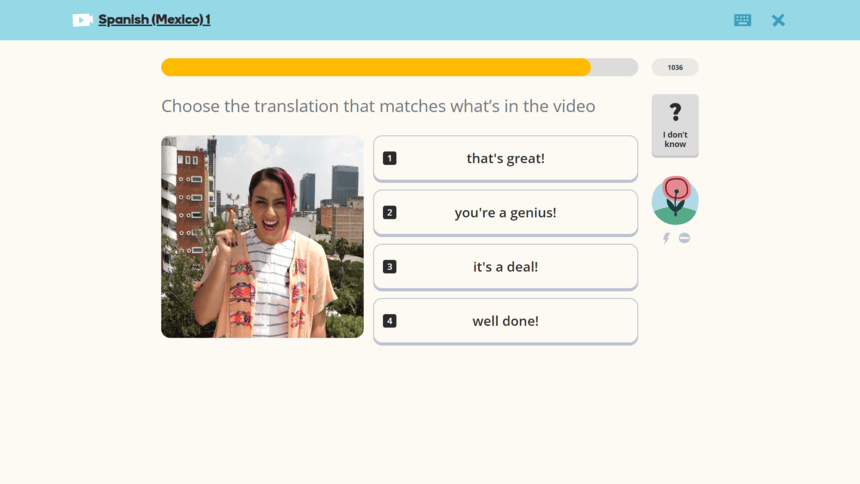
This means you get to watch native speakers as they communicate, bringing a more personal and immersive feel to each lesson. Seeing speakers’ body language, hand gestures, and intonation adds depth to the experience, especially when learning languages like Spanish, Italian, or German.
User-Generated Courses
One great feature of Memrise is the access it provides to both company-created courses and user-generated content. This means you can dive deeper into specialized topics that suit your interests, beyond the usual lessons.
For instance, if you’re studying French, you can find courses focused on French museum facts, wine, or even popular soccer teams. With hundreds of highly specific courses, there’s no shortage of material. We especially appreciate this feature because it lets you explore niche topics that align with your personal interests and hobbies.
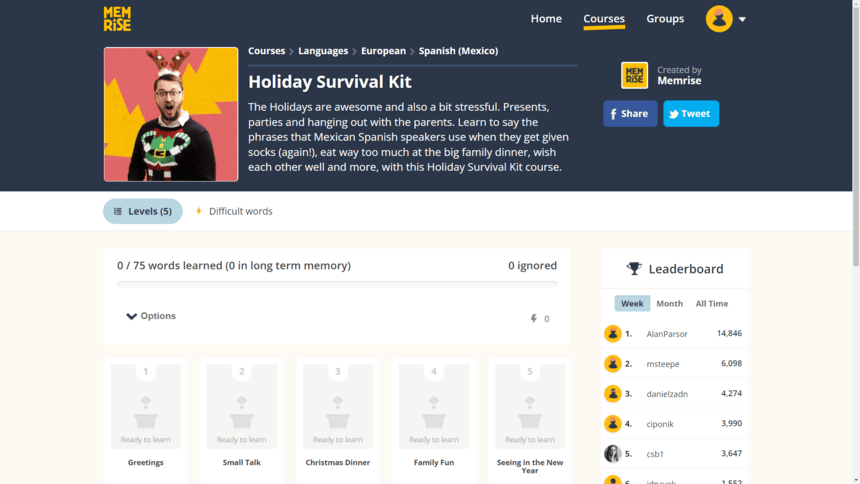
Once you’ve completed Memrise’s main course, this extensive content selection allows you to build a tailored language-learning path that keeps you motivated and engaged.
Personalize Lesson Length
Lastly, one feature our team really appreciates with Memrise is the option to customize lesson lengths and session duration within the settings (somewhat similar to Babbel). It’s one of the few language apps we’ve used that offers this level of flexibility.
For instance, unlike Rosetta Stone, where session length is fixed, Memrise allows you to adjust how many new words you review based on your availability. Whether you have an hour to tackle 100 words or just a few minutes for five phrases, Memrise can adapt to fit your schedule, which we find to be a huge advantage.
Verdict: Which Language App Should You Choose?
After thoroughly testing both programs, it’s a tough decision, but we ultimately have to give the slight edge to Rosetta Stone.
Their immersive learning method, which encourages full engagement with the target language, stands out as one of their strongest features. Along with this, their TruAccent speech recognition technology is highly effective for refining pronunciation, and the visual elements in their lessons help reinforce the connection between words and concepts. Additionally, the extra tools, such as interactive phrasebooks, short stories, and live classes, provide learners with well-rounded support that goes beyond just vocabulary and grammar.
All in all, we believe Rosetta Stone offers the more comprehensive and well-rounded language learning experience from start to finish in comparison to Memrise.
The main difference between Rosetta Stone and Memrise lies in their approach to language learning. Rosetta Stone focuses on an immersive, image-driven method with minimal use of translations, while Memrise incorporates user-generated content and videos of native speakers, along with greater flexibility in lesson customization.
The choice between Rosetta Stone and Memrise depends on your learning style. Rosetta Stone is ideal for visual learners seeking an immersive, structured approach, while Memrise offers more flexibility and niche content, including user-generated courses and native speaker videos.

